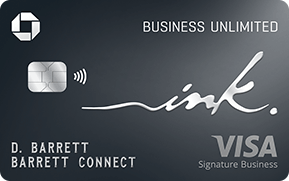Overview
Getting into the stock market used to seem intimidating, often viewed as something best left to Wall Street professionals or people with significant wealth. Fortunately, that’s no longer true. With user-friendly investing apps, commission-free trading, and fractional shares, anyone can start investing with as little as $1.
As you get started, here’s what you need to know to confidently buy your first stock, build good investing habits, and set the stage for long-term financial growth.
What is a Stock
Stock represents ownership in a company. When you buy shares, you own a small piece of that business and can benefit as it grows.
There are two main ways to make money with stocks:
Capital gains: When the stock’s price rises above what you paid for it, and you sell it to realize the return.
Dividends: When companies share a portion of their profits with shareholders.
But stocks come with risk. Prices can fluctuate daily—sometimes wildly—but historically, they’ve outperformed most other investments over the long term. That’s why patience, not perfect timing, is your greatest ally.
How to Buy Stocks in 5 Steps
Starting your investing journey doesn’t have to be complicated. Whether you’re putting $10 or $10,000 into the market, these five steps will help you set up your account, choose investments that fit your goals, and start building long-term wealth with confidence.
1. Choose your investing approach
Before diving in, decide how you want to manage your portfolio. The primary options include:
DIY investing: Online brokers make it easy to buy and sell stocks directly. You’ll choose your own investments and learn through the process.
Robo-advisors: These automated platforms build and manage a diversified portfolio for you based on your goals and risk tolerance.
- Human financial advisors: If you prefer personal guidance or have complex finances, a licensed advisor can help you create a tailored strategy.
2. Open a brokerage account
A brokerage account acts as your entry point to the stock market. Many modern brokers have $0 account minimums, and many allow fractional share investing, meaning you can buy a portion of a stock for as little as $1 or $5.
Common account types include individual retirement accounts (IRAs), which offer tax advantages on long-term savings, and taxable accounts for general investing and flexibility.
Here are some factors to keep in mind as you research and compare brokerage firms:
Fees and commissions: Look for low or no trading fees, especially for stocks and ETFs, and check for account maintenance costs.
Investment options: Make sure the broker offers access to the types of investments you want, whether it’s stocks, ETFs, mutual funds, or bonds.
Ease of use: A user-friendly website and mobile app can make a big difference when you’re learning the ropes.
Research tools and education: Look for brokers that provide screeners, analyst reports, and learning resources for beginners.Account minimums: Many brokers have no minimum deposit, but confirm before signing up.
Fractional shares: Some platforms let you invest small amounts by buying fractions of expensive stocks.
Automation options: Features like recurring investments or robo-advisor services can help you stay consistent without daily management.
Opening an account usually requires basic personal information, a government-issued ID, your Social Security number, and a linked bank account for funding.
3. Fund your account
Once your account is open, it’s time to deposit money. You can typically fund a brokerage account with an electronic transfer, wire transfer, or paper check.
There’s no need to wait until you’ve saved a large sum. The key is to begin consistently, even if your first deposit is small.
4. Research and choose your investments
Before buying, decide what types of investments align with your goals and comfort level. Individual stocks offer the highest potential returns but also the most risk, since your success depends on how a single company performs. They can be rewarding if you research and monitor them carefully.
Alternatively, mutual funds and exchange-traded funds (ETFs) provide instant diversification by bundling many stocks or other assets together in one investment. They’re ideal for beginners who want a balanced portfolio with less hands-on management.
Within those options, you’ll find several stock types suitable for beginners:
Blue-chip stocks: Shares of large, financially stable companies with long track records of steady performance. They’re often seen as reliable long-term holdings.
Growth stocks: Include fast-expanding companies reinvesting profits to fuel further growth. They can offer big upside potential but also greater volatility.
Value stocks: Represent companies trading below what analysts believe they’re worth, often due to temporary setbacks or market overreactions. They can offer steady returns and growth potential once the market corrects.
Dividend stocks: Pay regular income through quarterly dividends, making them attractive for investors who want both growth and consistent cash flow.
International stocks: Include companies based outside the US, offering exposure to global markets and diversification beyond domestic economic trends. They can provide growth opportunities in emerging regions but may carry added risks, such as currency fluctuations and geopolitical instability.
Use your broker’s research tools to explore performance data, read company reports, and analyze financial trends before making your first purchase.
5. Place your order
Buying stocks might sound complex, but it’s straightforward once you set up your account and decide what to buy. You’ll choose between two main order types:
Market orders: Execute immediately at the current price. They’re best when you want to buy or sell quickly and aren’t worried about small price changes.
Limit orders: Execute only if the stock reaches a price you set. They give you more control over what you pay or receive, but they may not always go through if the market doesn’t hit your target price.
Remember that many brokerages offer fractional shares, which let you invest based on dollar amounts instead of whole shares. This flexibility makes it easier to start small, build a diversified portfolio, and stay consistent with your investing plan.
Smart Strategies for Beginner Investors
Getting started with investing is easier when you follow proven strategies that build steady, long-term growth.
Ultimately, it’s up to you to determine your investment approach, but these simple approaches can help you stay focused, avoid emotional decisions, and make the most of every dollar you invest:
Start with index funds: Index mutual funds and ETFs that track major benchmarks like the S&P 500 provide instant diversification, low fees, and a simple, hands-off way to invest.
Use dollar-cost averaging: Invest a fixed amount regularly, such as monthly or biweekly, regardless of market fluctuations. This strategy helps smooth out volatility and removes the stress of trying to pick the “perfect” time to buy.
Stay patient: The stock market rewards time, not timing. Compounding works best when you let your investments grow undisturbed for years or even decades.
Reinvest your dividends: Many companies and funds pay dividends, which you can automatically reinvest to buy more shares. This accelerates compounding and helps your portfolio grow faster without any extra effort.
Keep fees and taxes low: High management fees and trading costs can quietly eat into your returns. When buying funds, stick with low-cost options and avoid unnecessary trades to keep more of your money working for you.
Stay diversified: Don’t put all your money into a single stock, sector, or region. A well-balanced portfolio across multiple asset types, such as stocks, bonds, and real estate, helps reduce risk while maintaining growth potential.
The Point
Buying your first stock is more than a financial milestone; it’s the start of taking control of your future. With today’s easy-to-use platforms, low costs, and fractional investing options, the barriers to entry have never been lower.
Start small, stay consistent, and focus on learning as you go. Every dollar you invest, and every lesson you pick up along the way, helps build a foundation for lasting financial growth.









 by your friends at The Daily Navigator
by your friends at The Daily Navigator



